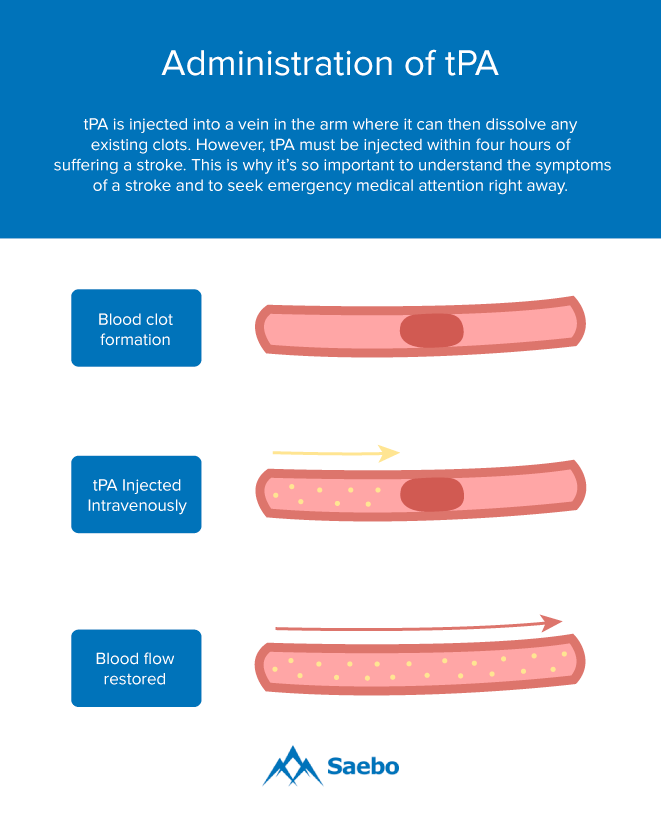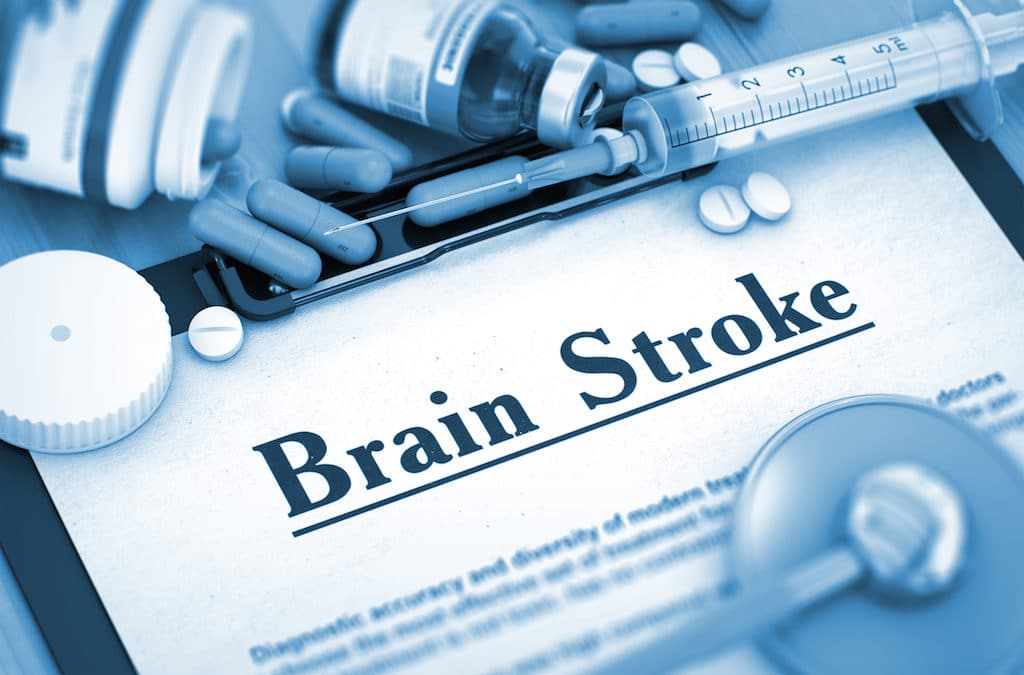How a Stroke is Treated


The road to recovery after a stroke is different for everybody. Treating a stroke varies depending on the type of stroke suffered—whether ischemic (caused by a blood clot) or hemorrhagic (caused by a brain bleed). Every patient is different, and strokes do not affect each person in the same way.
Regardless of the type of stroke, the most important thing to do is to seek treatment as quickly as possible. This is crucial in order to reduce the risk of long-term brain damage and start recovering right away. Treatment plans may include surgery, medications, and/or physical/speech/other therapies.
If you do think you’re experiencing a stroke or a Transient Ischemic Attack (TIA), seek help right away. Call 911 for an ambulance so an Emergency Medical Technician (EMT) can begin lifesaving treatment, instead of driving yourself or having someone else drive you to the hospital.
Treating an Ischemic Stroke or TIA
Ischemic strokes or TIAs occur when an artery that supplies freshly oxygenated blood to the brain gets clotted. While temporary clots usually cause TIAs, they need to be taken just as seriously as an ischemic stroke.
Typically, treatment for ischemic strokes and TIAs includes medication and, possibly, medical procedures.
Medications
The first course of action is to stabilize your vital signs. Next is the diagnosis. When the doctor concludes that you have in fact suffered a stroke, you may receive clot-dissolving medication. This medication, tissue plasminogen activator (tPA), increases chances of recovery if given soon after the start of stroke symptoms.
tPA is injected into a vein in the arm where it can then dissolve any existing clots. However, tPA must be injected within four hours of suffering a stroke. This is why it’s so important to understand the symptoms of a stroke and to seek emergency medical attention right away.
If, for any reason, a stroke patient cannot have tPA, they may be given an antiplatelet medication that stops platelets in the bloodstream from lumping together and forming clots. Another option is anticoagulant medicines, also known as blood thinners, which stop existing blood clots from growing larger. The most common anticoagulants are aspirin and clopidogrel.

Medical Procedures
In more severe cases, a short procedure may be taken to bring back normal blood flow. If this is the case, the doctor will use a catheter (a thin, pliable tube) and small cage to pull out the blood clot that caused the stroke in the first place.
If you have carotid artery disease, a carotid endarterectomy or carotid artery angioplasty may be the doctor’s recommendation. Either procedure will clear any clogged carotid arteries.
There are other procedures that are currently being researched to treat ischemic strokes, which include: Mechanical Clot Removal in Cerebral Ischemia (MERCI) and intra-arterial thrombolysis.
MERCI uses a device that cleans blood clots from the arteries. A catheter is passed through the carotid artery and then to the impacted artery in the brain. Then the device pulls the blood clot out through the inserted tube. For an intra-arterial thrombolysis, a catheter goes into the upper thigh (groin) and is inserted into the arteries of the brain. The catheter can then be used to deliver medication that will break up a blood clot that has formed in the brain.
Treatment for Hemorrhagic Stroke

A hemorrhagic stroke is when an artery in the brain bursts or leaks blood. Treatment for a hemorrhagic stroke begins with finding the cause of bleeding inside the brain and curbing it.
In contrast to treatments for ischemic strokes, antiplatelet medications and blood thinners aren’t used to treat hemorrhagic strokes. These medications can actually do more harm than good with these types of strokes as they may make bleeding in the brain much worse.
If someone who has been taking blood thinners or antiplatelet medicine suffers a hemorrhagic stroke, they will be taken off these medications right away. If high blood pressure is the cause of the hemorrhage, the patient will be prescribed medication to lower blood pressure and can, in turn, inhibit further bleeding.
Another treatment option for hemorrhagic strokes is surgery. This can include:
- Aneurysm Clipping. Used when an aneurysm is the cause of stroke, an aneurysm clipping helps to prevent further blood leakage. This operation blocks the aneurysm from the arteries in the brain and can also prevent a second aneurysm burst.
- Coil Embolization. Also used when an aneurysm causes a stroke, coil embolization is less complicated. A catheter is inserted in the groin and weaved toward the aneurysm. A small coil will then be thrust into the catheter to form a clot so the aneurysm can’t burst again.
- Arteriovenous Malformation (AVM) Repair. An AVM (arteries that get knotted together and then rupture within the brain) can also cause a hemorrhagic stroke. If this happens, the doctor will recommend an AVM repair. This could mean a surgery to take out the AVM, using radiation to reduce the size of AVM blood vessels, or injecting medicine into the AVM to stop blood flow.
In order to control bleeding, medication or a blood transfusion will be given through an IV. Patients will also be monitored very closely for increasing brain pressure. Symptoms of an increase in brain pressure include confusion, agitation, headache, and difficulty understanding instructions.
Recovery Options
The scope of every patient’s condition will be different. However, it’s important to remember that anyone who displays stroke-like symptoms needs immediate care.
Fortunately, there are many short and long-term treatments available that can aid you in your stroke recovery. Modern innovations, stroke exercises, and a variety of stroke-rehabilitation equipment are available as well.
All content provided on this blog is for informational purposes only and is not intended to be a substitute for professional medical advice, diagnosis, or treatment. Always seek the advice of your physician or other qualified health provider with any questions you may have regarding a medical condition. If you think you may have a medical emergency, call your doctor or 911 immediately. Reliance on any information provided by the Saebo website is solely at your own risk.
All content provided on this blog is for informational purposes only and is not intended to be a substitute for professional medical advice, diagnosis, or treatment. Always seek the advice of your physician or other qualified health providers with any questions you may have regarding a medical condition. If you think you may have a medical emergency, call your doctor or 911 immediately. Reliance on any information provided by the Saebo website is solely at your own risk.



